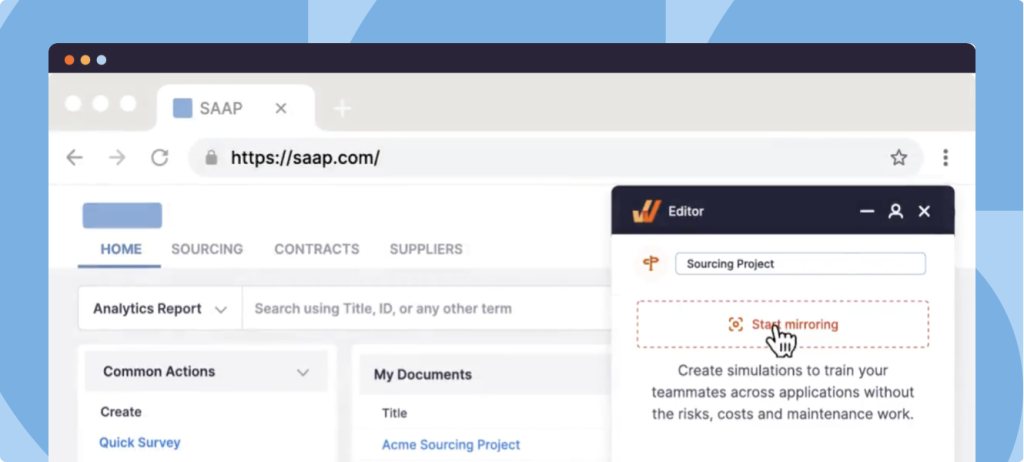Call center agent training helps agents build the skills, confidence, and knowledge to deliver superior customer service. It includes training on how to handle various customer service situations, how to route different support tickets, how to use call center software, and general customer support best practices.
Call center agents are your company’s frontline representatives, and it is critical that they are equipped with the right skills to handle customer interactions effectively.
In this article, we’ll explain the importance of call center agent training, strategies to enable agents with the skills and confidence to handle any support issue, and best practices for enabling call center agents.
What Is Call Center Training?
Call center agent training is the process of preparing individuals to work as customer service representatives in call centers. It includes communication skills, product knowledge training, call handling techniques, general customer service training, company policies and procedures training, software training, de-escalation tactics training, and emotional intelligence training.
What’s the Importance of Call Center Agent Training?
Call center agent training as it enables your call center agents with the knowledge, processes, and skills needed to handle requests, de-escalate conflict, and engage customers and inbound calls. Here are a few additional reasons why call center agent training is critical:
1. Better customer experience and faster ticket resolution
Call center agents are the frontline for your customer support experience. They are responsible for handling upset or frustrated customers. It’s critical that these agents have the emotional intelligence, product knowledge, and skill sets to correctly resolve tickets themselves or route tickets to the people who can provide better help.
2. Enhancing agent morale and retention
Improper training is one of the top reasons for the call center industry’s notably high employee attrition rate of 20% to 30%. (The worldwide average attrition rate for all industries is 10.9%.)
A high attrition rate implies that the company spends three to four times the monthly salary of an agent in hiring and onboarding for new agents.
Continuous learning and development can help boost employee morale and productivity, and keep retention in check.
3. Keeping up with industry changes
To keep agents up to date with the latest industry trends, they must be encouraged to attend industry events and conferences to network with peers, learn about new technologies, and gain insights into best practices. Additionally, knowledge management systems can be used to provide agents with easy access to latest information and best practices.
4. Improving efficiency
A well trained agent can handle customer interactions more efficiently. The number of calls per agent increases significantly when they are aware of the product and trained enough to offer superior customer service.
Proper training also helps agents avoid mistakes and errors, such as providing incorrect information or mishandling a call.
Related Resources
Types of Call Center Training Methods
Call centers require a contextual training strategy to enable agents with the knowledge and skills to overcome customer issues with compassion and efficiency. Here are a few training methods that allow call center agents to have the skills, knowledge, and confidence to provide helpful, empathetic support to customers.
1. Provide hands-on agent training
Call center agents handle a variety of incoming support issues. They are tasked with handling customers with care and empathy, de-escalating situations, and resolving the actual root cause of their problems.
According to the 70-20-10 rule of learning, 70% of knowledge and skill acquisition comes from hands-on experiences. But you can’t throw your call center agents to the wolves and let them learn on the fly – this will result in poor customer experiences and slow ticket resolution times.
With a tool like Whatfix Mirror, call centers can enable their new agents with hands-on training by creating replica sandbox environments of their support applications and processes. This allows new agents to learn by doing in a simulated application environment—all without risking live customer interactions.

With Mirror, quickly clone your call center software application and tasks into a sandbox application. Then, create in-app guided experiences like Task Lists, Flows, and Smart Tips that guide new agents through their contextual tasks, common call center scenarios, and support processes.

→ Easily create replica versions of your enterprise applications and workflows to provide hands-on user training, without technical dependencies.
→ Embed timely in-app experiences to drive knowledge retention and improve user training.
→ Auto-capture user engagement and training data to understand your simulated training’s impact.
2. Microlearning
Microlearning is a type of learning that breaks down learning content into small, bite-sized information modules. It is an effective training technique as learners get to apply the skills immediately after learning, which boosts knowledge retention.
Curating short, self-contained modules that contain specific skills and topics is an efficient call center training strategy. For example, a short video on customer interaction followed by a quiz on the same subject can help agents learn and retain better.
Microlearning is easily accessible and available on demand. Agents can learn conveniently according to their work schedules, complete modules at their own pace, skip or re-learn a topic, and create a learning schedule that does not hamper their productivity.
3. Role-playing and scenario-based training
Often, call center agents must deal with frustrated customers. Other times, agents will deal with what feels like unwinnable situations. Provide role-play agent training to build agent confidence and prepare them for these uncomfortable situations.
In this type of agent training, call center leaders and senior agents lead scenarios that put call center agents in awkward or difficult positions, allowing them the environment to make mistakes, learn, and develop better de-escalation and problem solving skills
4. Enable agents in the flow of work with in-app guidance
Personalizing your call center training programs means suggesting different learning paths for each agent, depending on their professional needs and career goals. It enables employees to take ownership of their learning and development, leading to better engagement and higher interest.
Companies can personalize their training programs by creating a pool of relevant training content such as video courses, articles, microlearning courses, etc. depending on the learner’s needs.
Implementing a digital adoption platform such as Whatfix enables L&D teams to create in-app learning experiences via engaging formats such as video, slideshows, and PDFs – all while empowering users to achieve proficiency in record time. Whatfix analytics allows teams to make data-driven decisions to understand friction points, segment learners, provide better learning paths, and create more personalized experiences.
5. Provide on-demand agent support
Real-time call center agent support is a critical component of call center agent training, especially if you’re using a BPO call center and need to offer remote training. It refers to the continued training and coaching provided to agents after they have completed their initial training program. Self-help support ensure that agents have the knowledge, skills, and support needed to provide excellent customer service and meet organizational goals. It increases job satisfaction and provides assurance that the employer is invested in their employees’ success and growth.
With a DAP like Whatfix, organizations can enable their call center agents with moment of need, real-time support with Self Help. Self Help crawls and aggregates all your call center SOPs, company knowledge, call center scripts, escalation policies, training videos, IT help desk articles, and more into a searchable wiki that overlays on your call center agents’ screen – regardless of you call center software implemented. This enables agents to find answers to their process or support questions without needing to request additional assitance.
6. Gamification-based training
As of 2020, Vynz Research valued the global gamification market at $5.3 billion, with a compound average growth rate of 32.7% through 2027.
Gamified training incorporates gaming elements such as points and badges into training courses, putting a new spin on workplace learning. It seamlessly engages learners and encourages them to take on repetitive tasks despite the risk of failure.
Game elements have the capability to foster creativity and innovation in employees. It makes the training process more engaging and enjoyable for the employees. Feedback cycles also become shorter in a gamified format as employees gain immediate feedback, which they can build and improve upon.
Gamification is an excellent call center training strategy because it leverages the natural human desire for competition and achievement while making the training process more interactive and enjoyable.
Call Center Agent Training Best Practices
Ready to enable call center agents with a personalized training strategy to provide better customer experiences? Here are a few best practices for implementing call center agent training in your organization.
1. Build a training software stack
A training software stack is the ecosystem of tools used to lead agents through your training program. It is significant for remote teams because it enables the organization to train its agents consistently and efficiently. These tools make constant monitoring possible even in a remote environment.
Common types of training software to enable your call center agents include:
- Sandbox environments will provide hands-on IT training to call center agents.
- Corporate LMS for creating and delivering online training courses, completing mandatory compliance training and upskilling agents.
- Digital adoption platforms (DAP) to enable call center agents with in-app guidance and support in the flow of work.
- Internal wiki software to create that an employee intranet for knowledge sharing and process documentation
2. Set clear training objectives
Clear, attainable and measurable goals are essential to provide direction to the employees. It provides a roadmap for them to follow and helps focus their efforts on important tasks.
When setting objectives for call center training, it is important to ensure that they are specific, measurable, achievable, relevant, and time-bound (SMART goals). This helps align overall organizational goals with the goals of individual agents. Setting clear objectives is particularly important if you’re using a contact center as a service (CCaaS) or remote call center.
3. Take a continuous approach to agent learning and development
Traditional forms of training don’t cut it for modern call centers. Agents require on-demand performance support, continuous learning opportunities to upskill themselves, reinforcement training for infrequently done tasks, and reskilling when processes or tasks change.
With a digital adoption platform (DAP) like Whatfix DAP, your call center agents can learn continuously in the flow of work. With Tours and Task Lists, new agents can be quickly onboarded to reduce time-to-proficiency. Use flows to drive the adoption of complex processes or support agents for infrequently done tasks. Smart Tips provide additional context or nudge users to take specific actions. With Self Help, integrate an in-app resource center to your knowledge repositories like your LMS, process documentation, training resources, SOPs, and other employee support documentation. Agents can search for any issue they’re facing or find any process document without leaving their call center or customer support software.

4. Use a variety of multimedia elements
Multimedia elements provide a more engaging and interactive learning experience. Some examples of multimedia that can be used in training modules are –
- Videos – Short training videos on different topics, such as dealing with specific customer interactions, can be added to the training modules.
- Infographics – Infographics are a great tool to present complex information such as call center metrics and customer satisfaction scores.
- Interactive simulations – Simulations can be used to create real-life scenarios that call center agents might face daily. Simulations help agents practice their skills and gain confidence.
- Audio- Audio modules can be beneficial for visual learners who find it easier to absorb information via listening. Companies can incorporate audio modules in their training material for learners to absorb information when they are on-the-go.
5. Incorporate feedback mechanism
Building a culture of feedback among call center agents is essential to encourage continuous professional development and better agent performance.
Organizations can build an effective feedback mechanism by investing in real-time feedback tools, scheduling regular one-on-one feedback sessions, and organizing weekly group calls where employees can share their most recent wins and challenges to create a collaborative culture of giving and receiving feedback.
6. Foster a positive work culture
A positive work environment that promotes teamwork, collaboration, and continuous learning helps employees build strong relationships in the workplace. This enables active exchange of useful information between the employees.
When employees are encouraged to share tips, techniques, and scenarios with each other, it facilitates both individual and organizational growth.
7. Evaluate training effectiveness
It is essential to develop strong, positive connections between call center agents and their customers despite the distance and lack of face-to-face interaction. Strong workplace relationships help create an environment of trust, manage conflict effectively, and encourage agents to learn from each other.
By equipping employees with the skills and strategies necessary to build strong relationships with customers, call centers can improve their customer satisfaction rate and increase customer retention
8. Create opportunities for relationship building
Businesses lose $13.5 million per year per 1000 employees to ineffective training. Therefore, it is critical for organizations to measure training effectiveness. Training effectiveness measures the impact of training on the learner’s knowledge, skills, performance, and the company’s return on investment and helps identify areas for improvement.
To evaluate the effectiveness of call center training, organizations must measure performance metrics, conduct surveys, observe agents and use simulations. Managers can then identify areas for improvement and make adjustments to the training program as needed.
Call Center Training Clicks Better With Whatfix
It is critical for organizations to invest in high quality call center training programs in order to deliver a superior customer experience, and increase employee retention and job satisfaction.
As customer expectations continue to evolve, call center training will remain an essential aspect of providing a positive customer experience. By staying up-to-date with the latest training techniques and best practices, call center managers can help their agents to thrive in this dynamic and fast-paced environment.
Whatfix’s real-time in-app training programs allow you to train employees on demand while providing insights to measure training effectiveness.
With Whatfix, create training and support content with a no-code editor – and analyze how agents are engaging with your training content, adhering to your processes, and using your call center software with call center agent behavior analytics.
With Whatfix, enable your agents with:
- Task Lists and Tours that provide call center agents with interactive, guided onboarding in their call center software and digital processes.
- Flows that provide contextual, step-by-step walkthroughs that guide agents through core processes and workflows.
- Self Help that provides real-time support to your agents in the form of a searchable wiki and connects to all your call center-related process documentation and training resources.
- Smart Tips that provide contextual nudges and helpful information to your agents.
- Pop-Ups that alert call center agents of announcements or process changes.
- Beacons that highlight underused, new, or updated call center software features or process changes.
- Field Validation that verifies your agents are entering data and filling forms in the correct data format.
- In-App Surveys that enable organizations to collect feedback from their call center agents on process inefficiencies, areas they need additional support on, etc.






